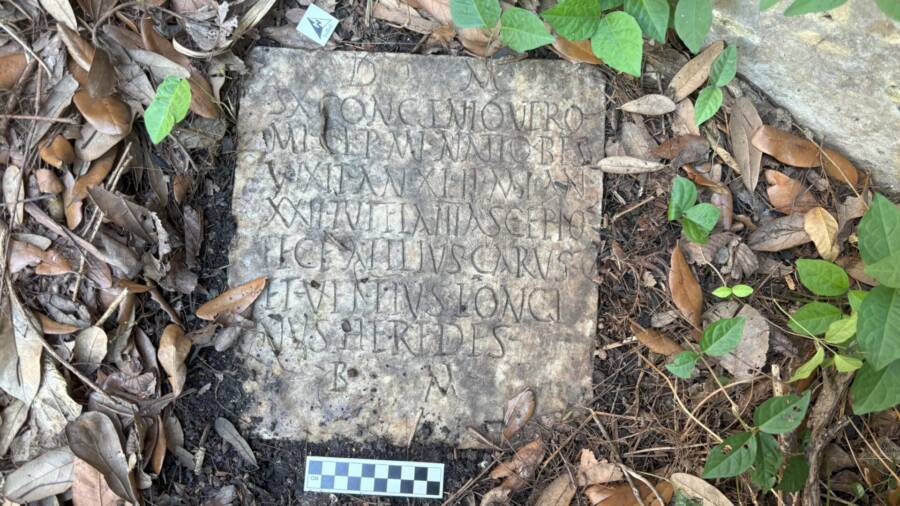0 Commenti
0 condivisioni
79 Views

Elenco
Elevate your Sngine platform to new levels with plugins from YubNub Digital Media!
-
Effettua l'accesso per mettere mi piace, condividere e commentare!
-
 YUBNUB.NEWSBiden/Harris Donor Arrested For Maliciously Starting Devastating Palisades FirePolice have arrested and charged Jonathan Rinderknecht, a Biden/Harris supporter, for maliciously starting the devastating Palisades, California, fire back in January. Acting U.S. Attorney Bill0 Commenti 0 condivisioni 79 Views
YUBNUB.NEWSBiden/Harris Donor Arrested For Maliciously Starting Devastating Palisades FirePolice have arrested and charged Jonathan Rinderknecht, a Biden/Harris supporter, for maliciously starting the devastating Palisades, California, fire back in January. Acting U.S. Attorney Bill0 Commenti 0 condivisioni 79 Views -
 YUBNUB.NEWSGold Hits $4,000 For The First Time Ever And Silver Is Closing In On $50 As The U.S. Dollar CollapsesIt is exciting to see the price of gold soar to unprecedented levels, but we should also be horrified by what is happening to the U.S. dollar. For years, many of us warned that debasing our currency0 Commenti 0 condivisioni 79 Views
YUBNUB.NEWSGold Hits $4,000 For The First Time Ever And Silver Is Closing In On $50 As The U.S. Dollar CollapsesIt is exciting to see the price of gold soar to unprecedented levels, but we should also be horrified by what is happening to the U.S. dollar. For years, many of us warned that debasing our currency0 Commenti 0 condivisioni 79 Views -
October Prime Day: The Hisense Canvas art TV is significantly cheaper than The Frame in every sizePrime Big Deal Days Samsung The Frame dupe: Save big on the Hisense Canvas TV SAVE UP TO $498: As of Oct. 8, every size of the Hisense Canvas art TV is on sale at Amazon for Prime Big Deal Days. The best discounts are 30% off the 55-inch Canvas and 28% off the 75-inch Canvas. Any time Samsung's The Frame goes on sale during a big internet sale...0 Commenti 0 condivisioni 684 Views
-
 ALLTHATSINTERESTING.COMArchaeologists Just Solved The Mystery Of How The Easter Island Statues Were MovedCarl LipoResearchers used a four-ton replica to help answer the question of how the moai statues of Easter Island were moved.A recent study may have solved the mystery behind how the Indigenous people of Rapa Nui were able to move Easter Islands moai statues onto their ceremonial platforms. Archaeologists say the statues were walked into place by remarkably few people using ropes. The researchers used physics, 3D modeling, and even a life-sized replica to finally solve the decades-long mystery. How The Moai Statues Were Moved Across Easter IslandThe new study, published in the Journal of Archaeological Science, proposes that the people of Rapa Nui pulled off the impressive feat by moving the statues in a zig-zag motion. By studying 3D models, the researchers determined that the massive monoliths had wide, D-shaped bases and leaned forward slightly, which would have made it easier for the inhabitants of Easter Island to walk them to their platforms.The team tested this theory by creating a 4.35-ton replica. With just 18 people, they managed to move the statue more than 300 feet in 40 minutes.Carl LipoA diagram demonstrating how the statues were moved.Once you get it moving, it isnt hard at all people are pulling with one arm, study co-author Carl Lipo of Binghamton University said in a statement. It conserves energy, and it moves really quickly. The hard part is getting it rocking in the first place. The question is, if its really large, what would it take? Are the things that we saw experimentally consistent with what we would expect from a physics perspective?The physics makes sense, Lipo continued. What we saw experimentally actually works. And as it gets bigger, it still works. All the attributes that we see about moving gigantic ones only get more and more consistent the bigger and bigger they get, because it becomes the only way you could move it.Another key factor in the transportation of these statues was the roads they traveled on, which were roughly 15 feet wide and curved downward. This design helped to stabilize the statues as they were walked to their final destination. Every time theyre moving a statue, it looks like theyre making a road, said Lipo. The road is part of moving the statue.Still, not everyone is convinced about this latest study.Other Potential Explanations For The Easter Island HeadsResearchers previously believed that the moai statues, which were created between 1250 and 1500 C.E., were transported horizontally on wooden rollers. However, Lipo claims this latest theory is the only explanation as to how the Indigenous people of Rapa Nui were able to move the statues. Carl LipoA fallen statue on Easter Island.Find some evidence that shows it couldnt be walking. Because nothing weve seen anywhere disproves that, Lipo challenged. In fact, everything we ever see and ever thought of keeps strengthening the argument.According to Lipo, this new research not only provides physical evidence unlike previous theories but it also honors the engineering feat of the people of Easter Island.It shows that the Rapa Nui people were incredibly smart. They figured this out, Lipo said. Theyre doing it the way thats consistent with the resources they have. So it really gives honor to those people, saying, look at what they were able to achieve, and we have a lot to learn from them in these principles.After learning how Easter Islands moai statues were moved, go inside nine unsolved ancient mysteries. Then, look at 30 famous statues around the world.The post Archaeologists Just Solved The Mystery Of How The Easter Island Statues Were Moved appeared first on All That's Interesting.0 Commenti 0 condivisioni 83 Views
ALLTHATSINTERESTING.COMArchaeologists Just Solved The Mystery Of How The Easter Island Statues Were MovedCarl LipoResearchers used a four-ton replica to help answer the question of how the moai statues of Easter Island were moved.A recent study may have solved the mystery behind how the Indigenous people of Rapa Nui were able to move Easter Islands moai statues onto their ceremonial platforms. Archaeologists say the statues were walked into place by remarkably few people using ropes. The researchers used physics, 3D modeling, and even a life-sized replica to finally solve the decades-long mystery. How The Moai Statues Were Moved Across Easter IslandThe new study, published in the Journal of Archaeological Science, proposes that the people of Rapa Nui pulled off the impressive feat by moving the statues in a zig-zag motion. By studying 3D models, the researchers determined that the massive monoliths had wide, D-shaped bases and leaned forward slightly, which would have made it easier for the inhabitants of Easter Island to walk them to their platforms.The team tested this theory by creating a 4.35-ton replica. With just 18 people, they managed to move the statue more than 300 feet in 40 minutes.Carl LipoA diagram demonstrating how the statues were moved.Once you get it moving, it isnt hard at all people are pulling with one arm, study co-author Carl Lipo of Binghamton University said in a statement. It conserves energy, and it moves really quickly. The hard part is getting it rocking in the first place. The question is, if its really large, what would it take? Are the things that we saw experimentally consistent with what we would expect from a physics perspective?The physics makes sense, Lipo continued. What we saw experimentally actually works. And as it gets bigger, it still works. All the attributes that we see about moving gigantic ones only get more and more consistent the bigger and bigger they get, because it becomes the only way you could move it.Another key factor in the transportation of these statues was the roads they traveled on, which were roughly 15 feet wide and curved downward. This design helped to stabilize the statues as they were walked to their final destination. Every time theyre moving a statue, it looks like theyre making a road, said Lipo. The road is part of moving the statue.Still, not everyone is convinced about this latest study.Other Potential Explanations For The Easter Island HeadsResearchers previously believed that the moai statues, which were created between 1250 and 1500 C.E., were transported horizontally on wooden rollers. However, Lipo claims this latest theory is the only explanation as to how the Indigenous people of Rapa Nui were able to move the statues. Carl LipoA fallen statue on Easter Island.Find some evidence that shows it couldnt be walking. Because nothing weve seen anywhere disproves that, Lipo challenged. In fact, everything we ever see and ever thought of keeps strengthening the argument.According to Lipo, this new research not only provides physical evidence unlike previous theories but it also honors the engineering feat of the people of Easter Island.It shows that the Rapa Nui people were incredibly smart. They figured this out, Lipo said. Theyre doing it the way thats consistent with the resources they have. So it really gives honor to those people, saying, look at what they were able to achieve, and we have a lot to learn from them in these principles.After learning how Easter Islands moai statues were moved, go inside nine unsolved ancient mysteries. Then, look at 30 famous statues around the world.The post Archaeologists Just Solved The Mystery Of How The Easter Island Statues Were Moved appeared first on All That's Interesting.0 Commenti 0 condivisioni 83 Views -
 ALLTHATSINTERESTING.COMThe 1,900-Year-Old Gravestone Of A Roman Sailor Was Just Unearthed In The Backyard Of A New Orleans HomeD. Ryan GrayThe newly-found ancient gravestone bearing an inscription dedicated to a Roman sailor named Sextus Congenius Verus.Coming across ancient Roman artifacts or graves isnt necessarily a rare thing. After all, the Roman Empire once ruled the Mediterranean, much of Europe, Western Asia, and parts of North Africa at its peak. Bits of its past are bound to turn up again and again in the world of archaeology.What is rare, however, is unearthing an artifact from ancient Rome in America.Needless to say, it was quite shocking when a couple in New Orleans was clearing brush from their yard and uncovered an ancient Roman grave marker of a soldier named Sextus Congenius Verus who died roughly 1,900 years ago. Now, what started as a chance discovery has become an international investigation involving scholars, museum professionals, and even the FBI.The Shocking Discovery Of An Ancient Roman Gravestone In New OrleansIn early 2025, Tulane University anthropologist Daniella Santoro and her husband, Aaron Lorenz, were clearing away undergrowth in their backyard. It was then that they noticed a flat marble slab with inscriptions that appeared to be in Latin. So, Santoro contacted University of New Orleans archaeologist D. Ryan Gray.According to Grays account from the Preservation Resource Center of New Orleans, Santoro and Lorenz were initially concerned that the discovery meant their home may have been built atop a cemetery, likely from the 18th or 19th century, that had long been forgotten. Gray acknowledged that the city does have a fair number of lost cemeteries that were later built over, but he believed that these were unlikely to be the stones source.Obviously, the inscription itself was a key piece of evidence, Gray recalled, but it was clear that my high school-level Latin was not up to the task of deciphering it.Susann LusniaAaron Lorenz and Daniella Santoro with the grave marker at their home.Gray took some photographs of the marble slab and sent them to University of Innsbruck professor Harald Stadler, who subsequently forwarded the photos to his brother, a Latin instructor. Meanwhile, Santoro also contacted fellow Tulane University professor Susann Lusnia, who focuses on classical studies.Lusnia and Stadler independently arrived at the same conclusion: The slab was a grave marker bearing an inscription dedicated to a second-century Roman sailor and soldier named Sextus Congenius Verus.That wasnt all, though. In another shocking twist, the stone had already been reported before.It fit the description of a stone known to be missing from the city museum of Civitavecchia, Italy, where it was originally found. Now, it was up to Team Tombstone, as Santoro dubbed it, to try to get the stone back home but that process isnt exactly straightforward.Returning The Tombstone Of Sextus Congenius Verus To ItalyEveryone involved agreed that returning the stone to Civitavecchias museum was a top priority, but as Gray acknowledged, international repatriation of antiquities is a complex process.Lusnia contacted the museum to let them know about the unusual discovery, while the rest of the team reached out to Tess Davis, the executive director of the Antiquities Coalition, which specializes in repatriating stolen or looted items of cultural heritage. Davis then redirected Team Tombstone to the FBIs Art Crime Team, which took the stone into custody while the repatriation process got underway.Susann LusniaDr. Susann Lusnia at the city museum in Civitavecchia.Still, the question remained: How did this Roman gravestone wind up in a New Orleans backyard in the first place?Based on the timeline of events thats been deduced thus far, the team determined that the tombstone had likely crossed the ocean sometime in the 20th century, possibly after World War II, given that the U.S. military and other Allied forces fought in Italy. Perhaps, they thought, one of those soldiers had brought it back with them.But no one who fought in World War II had lived at the address where the stone was found. The mystery continued.How Did This Roman Relic End Up In New Orleans?The home on Cambronne Street was purchased by Frank and Selma Simon in 1909 and belonged to their family for most of the 20th century thereafter. According to the 1940 Census, Frank Simon was the manager at a wholesale shoe company and, by then, 59 years old. He and Selma were then living at the house with their five adult daughters four of whom were employed as salespeople and one as a seamstress who retained the home until 1991.The Simons family, it seemed, was not likely to have been to Italy and brought the stone over to the United States.D. Ryan GrayThe house on Cambronne Street where the discovery was made.They did, however, have a neighbor who served in the U.S. Navy during World War II. Further investigation would reveal that he had only served in the Pacific Theater, however, ruling him out as well.Meanwhile, Lusnia visited the museum in Civitavecchia to learn a bit more about the local history. There, she learned that the city, just northwest of Rome, had been a major port for the Roman Empire and continued to be an important port city well into the 20th century.This also made it a clear target for Allied bombing raids in 1943 and 1944.Bombs decimated the museum, nearly destroying it entirely. It didnt reopen until 1970, and during the interim much of its collection was lost. The tombstone was likely one of the artifacts lost during this period, and while it was confirmed that U.S. troops remained in Civitavecchia for a time after Rome fell to Allied forces, it would be a Herculean feat to examine the service records of every soldier who passed through to see if they had any connection to New Orleans.The stone could have passed into the hands of an antique dealer who sold it to a tourist in the years after the war when there was no real way to police the sale of antiquities, said Gray.Right now, it is impossible to say, though well continue to look for new possibilities.After learning about this shocking discovery in New Orleans, read about the Roman Empires short-lived Pax Romana period. Then, read about why the Roman Empire ultimately fell.The post The 1,900-Year-Old Gravestone Of A Roman Sailor Was Just Unearthed In The Backyard Of A New Orleans Home appeared first on All That's Interesting.0 Commenti 0 condivisioni 81 Views
ALLTHATSINTERESTING.COMThe 1,900-Year-Old Gravestone Of A Roman Sailor Was Just Unearthed In The Backyard Of A New Orleans HomeD. Ryan GrayThe newly-found ancient gravestone bearing an inscription dedicated to a Roman sailor named Sextus Congenius Verus.Coming across ancient Roman artifacts or graves isnt necessarily a rare thing. After all, the Roman Empire once ruled the Mediterranean, much of Europe, Western Asia, and parts of North Africa at its peak. Bits of its past are bound to turn up again and again in the world of archaeology.What is rare, however, is unearthing an artifact from ancient Rome in America.Needless to say, it was quite shocking when a couple in New Orleans was clearing brush from their yard and uncovered an ancient Roman grave marker of a soldier named Sextus Congenius Verus who died roughly 1,900 years ago. Now, what started as a chance discovery has become an international investigation involving scholars, museum professionals, and even the FBI.The Shocking Discovery Of An Ancient Roman Gravestone In New OrleansIn early 2025, Tulane University anthropologist Daniella Santoro and her husband, Aaron Lorenz, were clearing away undergrowth in their backyard. It was then that they noticed a flat marble slab with inscriptions that appeared to be in Latin. So, Santoro contacted University of New Orleans archaeologist D. Ryan Gray.According to Grays account from the Preservation Resource Center of New Orleans, Santoro and Lorenz were initially concerned that the discovery meant their home may have been built atop a cemetery, likely from the 18th or 19th century, that had long been forgotten. Gray acknowledged that the city does have a fair number of lost cemeteries that were later built over, but he believed that these were unlikely to be the stones source.Obviously, the inscription itself was a key piece of evidence, Gray recalled, but it was clear that my high school-level Latin was not up to the task of deciphering it.Susann LusniaAaron Lorenz and Daniella Santoro with the grave marker at their home.Gray took some photographs of the marble slab and sent them to University of Innsbruck professor Harald Stadler, who subsequently forwarded the photos to his brother, a Latin instructor. Meanwhile, Santoro also contacted fellow Tulane University professor Susann Lusnia, who focuses on classical studies.Lusnia and Stadler independently arrived at the same conclusion: The slab was a grave marker bearing an inscription dedicated to a second-century Roman sailor and soldier named Sextus Congenius Verus.That wasnt all, though. In another shocking twist, the stone had already been reported before.It fit the description of a stone known to be missing from the city museum of Civitavecchia, Italy, where it was originally found. Now, it was up to Team Tombstone, as Santoro dubbed it, to try to get the stone back home but that process isnt exactly straightforward.Returning The Tombstone Of Sextus Congenius Verus To ItalyEveryone involved agreed that returning the stone to Civitavecchias museum was a top priority, but as Gray acknowledged, international repatriation of antiquities is a complex process.Lusnia contacted the museum to let them know about the unusual discovery, while the rest of the team reached out to Tess Davis, the executive director of the Antiquities Coalition, which specializes in repatriating stolen or looted items of cultural heritage. Davis then redirected Team Tombstone to the FBIs Art Crime Team, which took the stone into custody while the repatriation process got underway.Susann LusniaDr. Susann Lusnia at the city museum in Civitavecchia.Still, the question remained: How did this Roman gravestone wind up in a New Orleans backyard in the first place?Based on the timeline of events thats been deduced thus far, the team determined that the tombstone had likely crossed the ocean sometime in the 20th century, possibly after World War II, given that the U.S. military and other Allied forces fought in Italy. Perhaps, they thought, one of those soldiers had brought it back with them.But no one who fought in World War II had lived at the address where the stone was found. The mystery continued.How Did This Roman Relic End Up In New Orleans?The home on Cambronne Street was purchased by Frank and Selma Simon in 1909 and belonged to their family for most of the 20th century thereafter. According to the 1940 Census, Frank Simon was the manager at a wholesale shoe company and, by then, 59 years old. He and Selma were then living at the house with their five adult daughters four of whom were employed as salespeople and one as a seamstress who retained the home until 1991.The Simons family, it seemed, was not likely to have been to Italy and brought the stone over to the United States.D. Ryan GrayThe house on Cambronne Street where the discovery was made.They did, however, have a neighbor who served in the U.S. Navy during World War II. Further investigation would reveal that he had only served in the Pacific Theater, however, ruling him out as well.Meanwhile, Lusnia visited the museum in Civitavecchia to learn a bit more about the local history. There, she learned that the city, just northwest of Rome, had been a major port for the Roman Empire and continued to be an important port city well into the 20th century.This also made it a clear target for Allied bombing raids in 1943 and 1944.Bombs decimated the museum, nearly destroying it entirely. It didnt reopen until 1970, and during the interim much of its collection was lost. The tombstone was likely one of the artifacts lost during this period, and while it was confirmed that U.S. troops remained in Civitavecchia for a time after Rome fell to Allied forces, it would be a Herculean feat to examine the service records of every soldier who passed through to see if they had any connection to New Orleans.The stone could have passed into the hands of an antique dealer who sold it to a tourist in the years after the war when there was no real way to police the sale of antiquities, said Gray.Right now, it is impossible to say, though well continue to look for new possibilities.After learning about this shocking discovery in New Orleans, read about the Roman Empires short-lived Pax Romana period. Then, read about why the Roman Empire ultimately fell.The post The 1,900-Year-Old Gravestone Of A Roman Sailor Was Just Unearthed In The Backyard Of A New Orleans Home appeared first on All That's Interesting.0 Commenti 0 condivisioni 81 Views -
WWW.THEKITCHN.COMThe Manhattan Cocktail Is a Magical 3-Ingredient CombinationThis is so easy to make at home.READ MORE...0 Commenti 0 condivisioni 80 Views
-
5 Forgotten Halloween Traditions That Are Worth Bringing Back5 Forgotten Halloween Traditions That Are Worth Bringing Back Halloween is the perfect excuse to indulge in nostalgia, bringing back beloved traditions from decades past. From homemade treats to bonfires, there’s something magical about the simpler celebrations of yesteryear. Whether you’re hosting a full-themed dinner party or just looking to make everyday at-home festivities extra special,...0 Commenti 0 condivisioni 768 Views
-
10 Essential Tips for Winter-Proofing Your Fruit Trees So They'll Thrive in Spring10 Ways to Prep Your Fruit Trees for Winter So They'll Come Back Strong in Spring Credit: Tara Moore / Getty Images Key Takeaways Remove leaves, windfall fruit, and weeds around trees, and mulch for soil insulation.Protect trees with tree guards, fencing, and frequent applications of a deterrent.Fertilize only if a soil test detects any nutrient deficiency that needs fixing. Winter is...0 Commenti 0 condivisioni 1K Views
-
Shoppers Recommend These Wide-Toe Sneakers for 'Any Type of Foot Pain'—and They're a Third of the Price of HokasShoppers Recommend These Wide-Toe Sneakers for 'Any Type of Foot Pain'—and They're a Third of the Price of Hokas If you click on links we provide, we may receive compensation. Give your feet a little TLC. Published on October 8, 2025 05:00PM EDT Credit: Better Homes & Gardens As a wide-footed runner and avid walker, I’ve made the ill-fated error of wearing shoes that had me wincing...0 Commenti 0 condivisioni 667 Views




